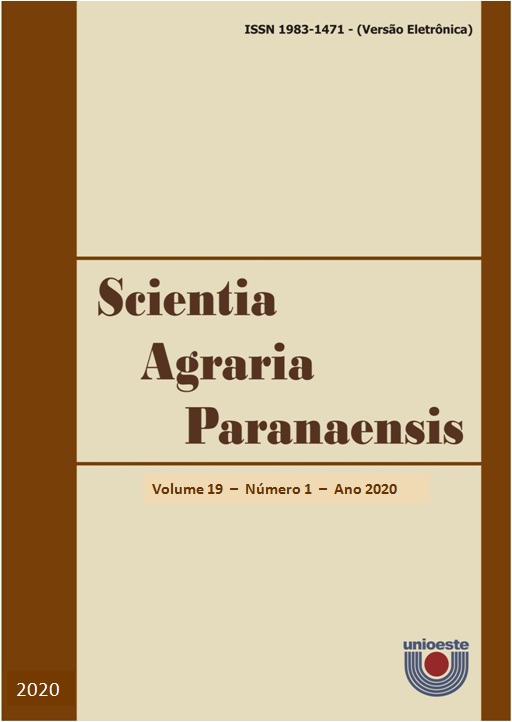Comparative wood anatomy of two tropical species
DOI:
https://doi.org/10.18188/sap.v19i1.22640
Agências de fomento
CAPES, UNIVERSIDADE FEDERAL DE LAVRAS
Resumo
Wood Anatomy is science field very relevant to understanding environmental climate changes and important in suggested to species conservation. The present study proposed the characterization of wood anatomy of Inga alba and Tapirira guianensis from two locations in the Legal Amazon, establishing ecological relationships between both and their habitat. The species were described and characterized according to standards for wood anatomy of IAWA. The quantitative data were submitted to ANAVA and later to PCA (principal components analysis). Qualitatively, characters such as slightly different growth layers, bounded by fibrous zones, diffuse porosity, diagonal arrangement, predominantly solitary vessel, simple perforate plate, libriform and septate fibers, heterogeneous rays were common the two species independent sites following the pattern for Tropical rainforests. However, there were quantitative differences for diameter and frequency mm2 of vessel, and frequency of rays per linear mm related in sites where substrates are most nutritious. As for diameter of pits, there were significant differences, however, in this case, related to species. Similarities between qualitative characters suggest that species inserted in the same environment, even if they belong to different rates, can share several adaptive characters.Downloads
Publicado
23-05-2020
Como Citar
FERREIRA, C. A.; RIBEIRO, A. de O.; URBINATI, C. V.; DUARTE, P. J.; MORI, F. A.; MOGLIO, B. V. Comparative wood anatomy of two tropical species. Scientia Agraria Paranaensis, [S. l.], v. 1, n. 1, p. 43–51, 2020. DOI: 10.18188/sap.v19i1.22640. Disponível em: https://saber.unioeste.br/index.php/scientiaagraria/article/view/22640. Acesso em: 12 jul. 2025.
Edição
Seção
Artigos Científicos
Licença
Aviso de Direito Autoral Creative Commons
Política para Periódicos de Acesso Livre
Autores que publicam nesta revista concordam com os seguintes termos:
1. Autores mantém os direitos autorais e concedem à revista o direito de primeira publicação, com o trabalho simultaneamente licenciado sob a Licença Creative Commons Attribution que permite o compartilhamento do trabalho com reconhecimento da autoria e publicação inicial nesta revista.2. Autores têm autorização para assumir contratos adicionais separadamente, para distribuição não-exclusiva da versão do trabalho publicada nesta revista (ex.: publicar em repositório institucional ou como capítulo de livro), com reconhecimento de autoria e publicação inicial nesta revista.
3. Autores têm permissão e são estimulados a publicar e distribuir seu trabalho online (ex.: em repositórios institucionais ou na sua página pessoal) a qualquer ponto antes ou durante o processo editorial, já que isso pode gerar alterações produtivas, bem como aumentar o impacto e a citação do trabalho publicado (Veja O Efeito do Acesso Livre).
Licença Creative Commons
Esta obra está licenciada com uma Licença Creative Commons Atribuição-NãoComercial-CompartilhaIgual 4.0 Internacional, o que permite compartilhar, copiar, distribuir, exibir, reproduzir, a totalidade ou partes desde que não tenha objetivo comercial e sejam citados os autores e a fonte.


